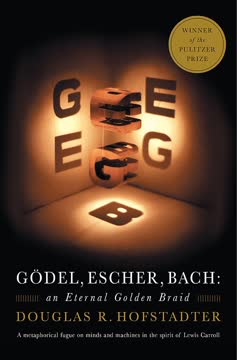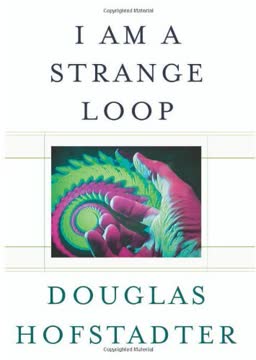Key Takeaways
1. The Interwoven Dance of Logic and Art
"The central theme of this book is that the logical structures which underlie mathematics are mirrored in music and art."
Underlying Structures. The book explores the idea that seemingly disparate fields like mathematics, music, and art share common underlying structures. These structures, often based on logic and patterns, are not just abstract concepts but are deeply embedded in the way we perceive and create.
Examples of shared structures:
- Mathematical sequences like the Fibonacci sequence appear in musical compositions and natural forms.
- The concept of recursion, found in mathematical functions, is mirrored in the self-referential nature of some art and music.
- Symmetry, a key concept in geometry, is also a fundamental element in visual art and musical harmony.
Bridging the Divide. The book challenges the traditional separation between logic and art, suggesting that they are not mutually exclusive but rather complementary ways of understanding the world. By exploring these connections, we gain a deeper appreciation for the richness and complexity of human thought.
2. Levels of Meaning: From Symbols to Consciousness
"Meaning is a very slippery concept, and it is not at all clear that there is a single, well-defined notion of meaning."
Hierarchical Systems. The book delves into the idea that meaning is not a fixed entity but rather emerges from a hierarchy of levels. At the lowest level, we have symbols, which are arbitrary marks or sounds. These symbols are then combined to form more complex structures, such as words, sentences, and mathematical equations.
Emergent Meaning. Meaning arises from the relationships between these symbols and the context in which they are used. It's not inherent in the symbols themselves but rather emerges from the way they interact within a system.
Consciousness as the Pinnacle. The book suggests that consciousness itself can be seen as the highest level of meaning, a complex system of symbols and relationships that gives rise to self-awareness and subjective experience. This perspective challenges us to consider how meaning is constructed and interpreted at different levels of existence.
3. Self-Reference and Strange Loops
"A strange loop arises whenever, by moving only upwards (or only downwards) through the levels of some hierarchical system, you unexpectedly find yourself back where you started."
Self-Referential Systems. The concept of self-reference, where a system refers to itself, is a recurring theme in the book. This idea is explored through examples like Escher's drawings, where images contain themselves, and Bach's canons, where musical themes loop back on themselves.
Strange Loops. These self-referential systems often give rise to "strange loops," where moving through a hierarchy leads back to the starting point. This creates a sense of paradox and challenges our linear understanding of cause and effect.
Implications for Understanding. Strange loops are not just abstract concepts but are also found in the way we think about ourselves and the world. They highlight the limitations of linear thinking and the interconnectedness of different levels of reality.
4. Isomorphism: The Mirror of Structures
"Isomorphism is a very powerful idea, and it is the key to understanding how different systems can mirror each other."
Structural Similarity. Isomorphism refers to the existence of similar structures in different systems. This means that two seemingly unrelated systems can be mapped onto each other, revealing underlying similarities in their organization and behavior.
Examples of Isomorphism:
- The structure of a musical fugue can be mapped onto the structure of a mathematical proof.
- The patterns in a painting can be mapped onto the patterns in a natural landscape.
- The rules of a formal system can be mapped onto the rules of a game.
Revealing Hidden Connections. Isomorphism allows us to see beyond the surface differences between systems and discover deeper connections. It suggests that the universe is not a collection of isolated entities but rather a network of interconnected structures.
5. Formal Systems: The Rules of the Game
"A formal system is a set of symbols, together with a set of rules for manipulating those symbols."
Symbol Manipulation. Formal systems are abstract structures that consist of symbols and rules for manipulating those symbols. These systems are the foundation of mathematics and logic, providing a framework for reasoning and deduction.
Examples of Formal Systems:
- Euclidean geometry, with its axioms and theorems
- Propositional logic, with its symbols and inference rules
- Computer programming languages, with their syntax and semantics
Limitations of Formal Systems. While formal systems are powerful tools for reasoning, they are also subject to limitations. Gödel's incompleteness theorem, discussed later in the book, demonstrates that there are inherent limits to what can be proven within a formal system.
6. Gödel's Incompleteness Theorem: Limits of Logic
"All consistent axiomatic formulations of number theory include undecidable propositions."
Inherent Limitations. Gödel's incompleteness theorem is a landmark result in mathematical logic. It states that within any formal system that is powerful enough to express basic arithmetic, there will always be true statements that cannot be proven within the system itself.
Implications of the Theorem:
- There are inherent limits to what can be proven using logic alone.
- No formal system can be both complete and consistent.
- Mathematics is not a closed system but rather an open-ended exploration.
Beyond Formal Systems. Gödel's theorem suggests that human understanding goes beyond the limitations of formal systems. It highlights the role of intuition, creativity, and self-awareness in our ability to grasp complex ideas.
7. Artificial Intelligence: Can Machines Think?
"The question of whether machines can think is not a scientific question, but a philosophical one."
The Turing Test. The book explores the question of whether machines can think, often referencing the Turing Test as a benchmark for artificial intelligence. The Turing Test proposes that if a machine can convincingly imitate human conversation, it can be considered intelligent.
Beyond Imitation. The book argues that passing the Turing Test is not sufficient to demonstrate true consciousness or understanding. It raises questions about the nature of subjective experience and whether machines can ever truly possess it.
The Limits of Computation. The book suggests that consciousness may not be reducible to computation alone. It explores the possibility that there are aspects of human thought that cannot be captured by algorithms or formal systems.
8. The Nature of Consciousness: A Deep Mystery
"Consciousness is a very strange phenomenon, and we are still very far from understanding it."
Subjective Experience. The book delves into the mystery of consciousness, the subjective experience of being aware. It explores the question of how physical processes in the brain give rise to our inner world of thoughts, feelings, and sensations.
The Hard Problem of Consciousness. The book acknowledges the "hard problem" of consciousness, which refers to the difficulty of explaining how and why we have subjective experiences. It suggests that this problem may require a fundamental shift in our understanding of the relationship between mind and matter.
Exploring the Unknown. The book encourages us to embrace the mystery of consciousness and to continue exploring the boundaries of human understanding. It suggests that the quest to understand consciousness is one of the most profound and challenging endeavors of our time.
9. Music, Art, and the Mind: Echoes of Structure
"Music is a mirror of the mind, and it reflects the structures of our thought processes."
Cognitive Resonance. The book explores the idea that music and art are not just aesthetic experiences but also reflect the underlying structures of our minds. It suggests that our brains are wired to respond to patterns, symmetries, and other forms of organization.
Examples of Cognitive Resonance:
- The use of repetition and variation in music mirrors the way we process information.
- The use of perspective and composition in art reflects the way we perceive the world.
- The emotional impact of music and art is linked to the way they resonate with our cognitive and emotional structures.
A Deeper Understanding. By exploring the connections between music, art, and the mind, we gain a deeper understanding of ourselves and the way we experience the world. It suggests that these forms of expression are not just cultural artifacts but also windows into the workings of our consciousness.
10. The Beauty and Complexity of Self
"The self is a strange loop, a self-referential system that is constantly creating and recreating itself."
Self as a System. The book concludes by exploring the concept of the self as a complex, self-referential system. It suggests that our sense of identity is not a fixed entity but rather a dynamic process of self-creation and self-interpretation.
The Paradox of Self. The self is both the subject and object of its own awareness, creating a strange loop that is both fascinating and perplexing. This paradox highlights the inherent complexity of human consciousness.
Embracing the Journey. The book encourages us to embrace the journey of self-discovery and to appreciate the beauty and complexity of our own minds. It suggests that the quest to understand ourselves is a lifelong endeavor that is both challenging and rewarding.
Last updated:
FAQ
1. What is "Gödel, Escher, Bach: An Eternal Golden Braid" by Douglas R. Hofstadter about?
- Interdisciplinary Exploration: The book explores deep connections between mathematics, art, and music, using the works of logician Kurt Gödel, artist M.C. Escher, and composer Johann Sebastian Bach as central figures.
- Self-Reference and Recursion: Hofstadter investigates the concept of self-reference and recursion, showing how these ideas appear in logic, art, and music.
- Consciousness and Intelligence: The book delves into the nature of human thought, consciousness, and artificial intelligence, asking how meaning and mind emerge from formal systems.
- Dialogues and Playfulness: Through playful dialogues and analogies, Hofstadter makes complex ideas accessible, blending narrative, puzzles, and philosophical inquiry.
2. Why should I read "Gödel, Escher, Bach" by Douglas R. Hofstadter?
- Unique Intellectual Journey: The book offers a one-of-a-kind journey through mathematics, philosophy, art, and music, appealing to readers interested in how different disciplines intersect.
- Understanding of Consciousness: It provides a thought-provoking examination of consciousness, self-awareness, and the possibility of artificial intelligence.
- Engaging and Creative Style: Hofstadter’s use of dialogues, puzzles, and humor makes challenging concepts enjoyable and memorable.
- Influential and Award-Winning: Winner of the Pulitzer Prize for General Non-Fiction, the book is widely regarded as a classic in cognitive science and philosophy.
3. What are the key takeaways from "Gödel, Escher, Bach"?
- Strange Loops and Self-Reference: The concept of "strange loops"—systems that reference themselves—are central to understanding consciousness and meaning.
- Limits of Formal Systems: Gödel’s Incompleteness Theorem shows that no formal system can be both complete and consistent, which has profound implications for logic and mathematics.
- Interconnectedness of Disciplines: The book demonstrates how similar patterns and structures appear in mathematics, art, and music, suggesting a unity of creative thought.
- Emergence of Mind: Hofstadter argues that consciousness arises from complex, recursive patterns, not from any single component or level of a system.
4. How does Douglas R. Hofstadter use Gödel’s Incompleteness Theorem in "Gödel, Escher, Bach"?
- Foundation for Self-Reference: Gödel’s theorem is used to illustrate how self-reference can lead to paradoxes and limitations in formal systems.
- Implications for Artificial Intelligence: The theorem suggests that human minds, like formal systems, may have inherent limitations, challenging the idea of fully replicating intelligence in machines.
- Analogy to Art and Music: Hofstadter draws parallels between Gödel’s logical structures and the recursive, self-referential patterns in Escher’s art and Bach’s music.
- Limits of Mechanistic Explanations: The theorem is a springboard for discussing whether minds can be fully explained by mechanical or algorithmic processes.
5. What is a "strange loop" in "Gödel, Escher, Bach" and why is it important?
- Definition of Strange Loop: A "strange loop" is a hierarchical system where, by moving through levels, one unexpectedly returns to the starting point, creating a form of self-reference.
- Examples in the Book: Hofstadter uses Escher’s drawings, Bach’s fugues, and Gödel’s theorems as examples of strange loops in different domains.
- Relevance to Consciousness: Strange loops are proposed as the underlying structure of self-awareness and consciousness, where the mind can observe and refer to itself.
- Philosophical Implications: The concept challenges traditional, linear views of systems and suggests that meaning and mind emerge from recursive, self-referential processes.
6. How does "Gödel, Escher, Bach" connect mathematics, art, and music?
- Shared Patterns and Structures: The book shows that recursion, symmetry, and self-reference are common to all three fields.
- Case Studies: Gödel’s logical proofs, Escher’s impossible drawings, and Bach’s musical compositions are analyzed to reveal their underlying similarities.
- Dialogues and Analogies: Hofstadter uses fictional dialogues and analogies to make abstract connections tangible and relatable.
- Unified Theory of Creativity: The book suggests that the creative process in each discipline is fundamentally similar, rooted in the manipulation of formal systems.
7. What does "Gödel, Escher, Bach" say about artificial intelligence and the possibility of machine consciousness?
- Skepticism about Strong AI: Hofstadter questions whether machines can truly possess consciousness or self-awareness, given the limitations revealed by Gödel’s theorem.
- Symbolic Representation: The book discusses how intelligence might arise from symbol manipulation, but also highlights the challenges of replicating human-like understanding.
- Emergence and Complexity: Consciousness is presented as an emergent property of complex, recursive systems, not easily reducible to algorithms.
- Open Questions: Hofstadter leaves open the possibility of machine consciousness but emphasizes the philosophical and technical hurdles involved.
8. How does Douglas R. Hofstadter use dialogues and literary devices in "Gödel, Escher, Bach"?
- Playful Dialogues: The book features recurring characters (like Achilles and the Tortoise) in whimsical dialogues that mirror the book’s themes.
- Allegory and Parody: Many dialogues are parodies of famous works or mathematical concepts, making abstract ideas more accessible.
- Layered Storytelling: The dialogues often contain self-referential or recursive elements, reflecting the book’s central motifs.
- Engagement and Accessibility: These literary devices help demystify complex topics and invite readers to actively participate in the intellectual exploration.
9. What are some of the most important concepts and definitions introduced in "Gödel, Escher, Bach"?
- Formal Systems: Defined as sets of rules for manipulating symbols, formal systems are central to the book’s exploration of logic and meaning.
- Recursion: The process by which a function, definition, or pattern refers to itself, recursion is a key theme in mathematics, art, and music.
- Isomorphism: The idea that different systems can have the same structure, allowing for analogies between logic, art, and music.
- Levels of Description: Hofstadter discusses how systems can be described at multiple levels, from simple rules to emergent properties like consciousness.
10. What are the best quotes from "Gödel, Escher, Bach" and what do they mean?
- "A self-referential system can never be complete." This encapsulates Gödel’s Incompleteness Theorem and its implications for logic and the mind.
- "Strange loops are at the core of consciousness." Hofstadter’s central thesis that self-reference and recursion give rise to self-awareness.
- "Meaning is not a property of symbols, but of the system in which they operate." This highlights the book’s focus on context and emergence in understanding.
- "The patterns of Bach, Escher, and Gödel are echoes of the same fundamental idea." A summary of the book’s interdisciplinary approach.
11. How does "Gödel, Escher, Bach" address the nature of meaning and understanding?
- Meaning as Emergent: The book argues that meaning arises from the interplay of symbols within a system, not from the symbols themselves.
- Context-Dependence: Understanding is shown to depend on context, interpretation, and the ability to recognize patterns and analogies.
- Limits of Formalization: Hofstadter discusses how some aspects of meaning and understanding may elude complete formalization, as suggested by Gödel’s theorem.
- Role of Self-Reference: The ability of a system to refer to itself is presented as crucial for the emergence of true understanding.
12. In what ways has "Gödel, Escher, Bach" influenced philosophy, cognitive science, and popular culture?
- Impact on Cognitive Science: The book has shaped discussions about consciousness, artificial intelligence, and the nature of mind in both academic and popular contexts.
- Philosophical Debates: It has contributed to debates on the limits of formal systems, the possibility of machine intelligence, and the philosophy of mind.
- Cultural References: "Gödel, Escher, Bach" is frequently cited in discussions of recursion, self-reference, and interdisciplinary thinking.
- Enduring Legacy: Decades after its publication, the book remains a touchstone for anyone interested in the deep questions of logic, creativity, and consciousness.
Review Summary
Gödel, Escher, Bach: An Eternal Golden Braid is a complex, ambitious work exploring intelligence, consciousness, and self-reference through mathematics, art, and music. Readers praise its profound insights and interdisciplinary approach, though some find it overly long and difficult. The book draws connections between formal systems, recursion, and artificial intelligence, using dialogues and examples to illustrate complex concepts. While dated in some aspects, it remains influential and thought-provoking, challenging readers to contemplate the nature of mind and cognition.
Similar Books
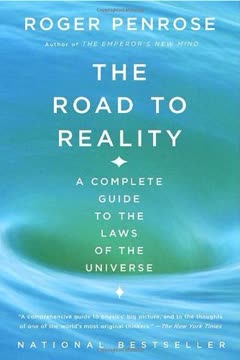
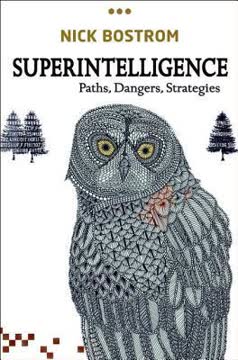
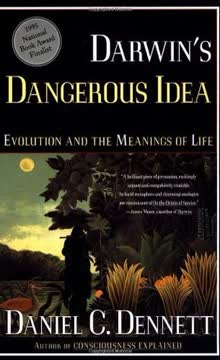
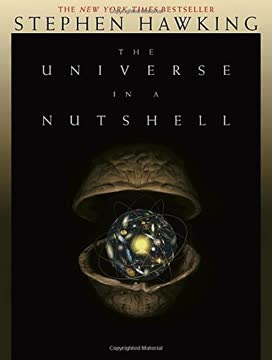

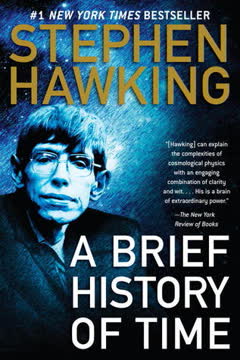
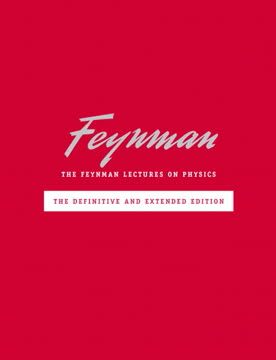
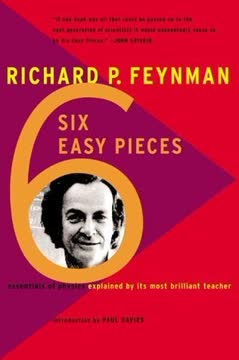

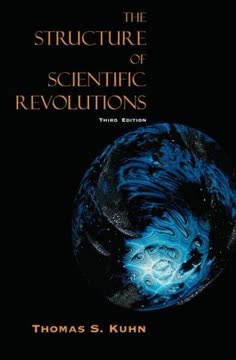
Download PDF
Download EPUB
.epub digital book format is ideal for reading ebooks on phones, tablets, and e-readers.
